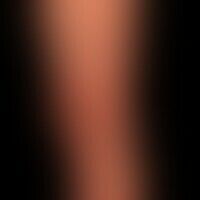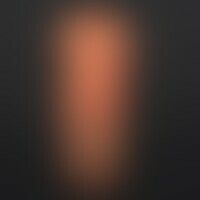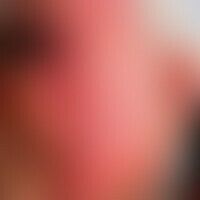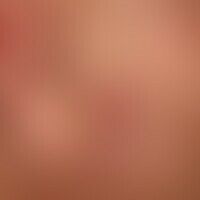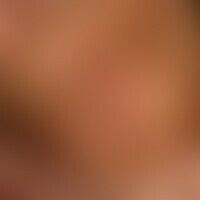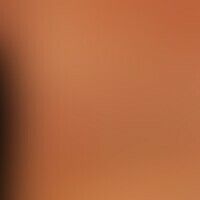Image diagnoses for "Plaque (raised surface > 1cm)", "red"
423 results with 1872 images
Results forPlaque (raised surface > 1cm)red

Contact dermatitis allergic L23.0
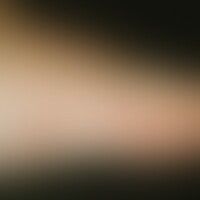
Larva migrans B76.9
Larva migrans. linear plaque, subepidermally located, winding passage through Ancylostoma brasiliensis in the area of the foot.
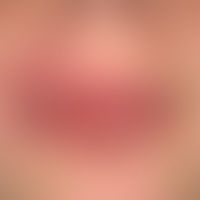
Cheilitis granulomatosa G51.2
Cheilitis granulomatosa: initially recurrent, now chronic persistent swelling of the upper and lower lip.

Cutaneous t-cell lymphomas C84.8
Lymphoma, cutaneous T-cell lymphoma. Type mycosis fungoides, perennial plaque stage, transformation to tumor stage.
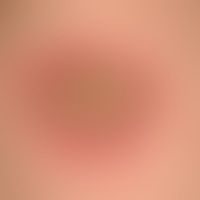
Vaccinations skin changes
Influenza vaccinations, skin changes:initially blistery, later purulent local reaction after influenza vaccination.

Mycosis fungoides C84.0
Mycosis fungoides: Plaque stage. 53-year-old man with multiple, disseminated, 1.0-5.0 cm large, in places also large-area, moderately itchy, distinctly increased consistency, red rough plaques. development over 4 years. initial findings.
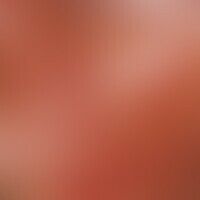
Mucinosis cutaneous (overview) L98.5
Mucinosis(s): Plaque-shaped, idiopathic, cutaneous mucinosis, conspicuous telangiectasia, changing intensive findings during the day.
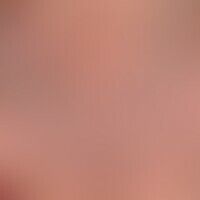
Contact dermatitis toxic L24.-
Contact dermatitis toxic: Detail enlargement: Strong hyperkeratosis on reddened skin as well as isolated small rhagades and erosions on the right foot of a 46-year-old patient.
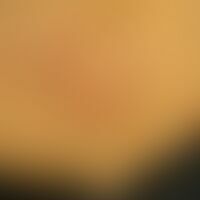
Circumscribed scleroderma L94.0
Circumscribed scleroderma: 52-year-old woman, existing for about 1 year, histologically morphea secured.
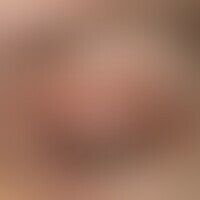
Eyelid dermatitis (overview) H01.11
Contact allergic eyelid eczema, exacerbation of skin changes after application of eyelid cosmetics.

Psoriasis capitis L40.8
Psoriasis capitis: chronic, solitary, for months, localized on the forehead and in the hairy area, sharply defined (arrows), symptomless, red, rough plaque with coarse surface scaling.

Lupus erythematodes chronicus discoides L93.0
Lupus erythematodes chronicus discoides: large, sharply defined plaque with a central, clearly sunken (atrophy of the subcutaneous fatty tissue), poikilodermatic scar; the peripheral zones continue to show inflammatory activity.
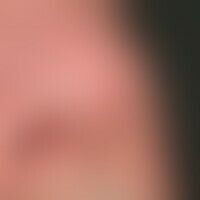
Basal cell carcinoma sclerodermiformes C44.L
Basal cell carcinoma, sclerodermiformes. 1 cm diameter of irritation-free, almost skin-coloured plaque with irregular surface in a 58-year-old patient. There are single, fine telangiectases on the bridge of the nose.

Dyshidrotic dermatitis L30.8
Dyshidrotic dermatitis: chronic recurrent dermatitis on several toes. recurrent episodes with itchy blisters. no signs of atopy. no contact allergy.
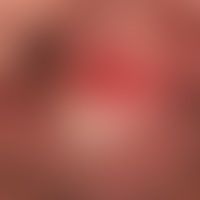
Erythroplasia queyrat D07.4
Erythroplasia. solitary, chronically dynamic, about 2 cm in size, sharply defined, clearly increased in consistency, symptom-free, red, smooth, weeping plaque. continuous growth for about 2 years.
